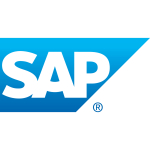How has it helped my organization?
I worked for a MuleSoft partner for four years before going independent mid 2017.
What is most valuable?
MuleSoft offers with the Anypoint Platform a unified platform for API management and an integration Platform as a Service (iPaaS) as well as an on-premise Enterprise Service Bus pattern.
The iPaaS and API management are offered on CloudHub, MuleSoft's SaaS offering, and is located on Amazon Web Services. API management and the iPaaS run-time can also be deployed on-premise or in a private cloud. The run-time manager, Anypoint Runtime Manager (ARM), for monitoring and alerting on the run-time is located by default on CloudHub (AWS).
The API management capabilities are very mature and allow an organization to re-use microservices. It enables efficient self-service for connecting (external) API consumers through Anypoint Exchange. The API Manager includes out-of-the-box policies that can be used for rate limiting, throttling, and security.
The platform support High Availability, High Reliability and High Performance if the required patterns and network topology are followed.
The platform offers over 200 standard connectors for applications and technology, such as HTTP(s), databases, SOAP, XML, and REST, as well as premium connectors for SAP, HL7, EDI, etc.
Integrations are configured visually by dragging and dropping them on a canvas, but they do sometimes require some coding by Java, .NET or Groovy.
The API management, iPaaS and on-premise ESB run-times are based on the same source code and allow an smooth in-time move to iPaaS, if desired, with minimal changes to the existing configuration and code.
The recent Q3 2017 'Crowd' release of the platform included the flow designer, a browser based visual zero-code IDE for citizen integrators, and additional functionality for API management.
What needs improvement?
MuleSoft's release calendar is rather conventional with two major, two minor releases and hotfixes in between. The competition sometimes offer more rapid release cycles and provides improved and new functionality with a faster time-to-market.
For how long have I used the solution?
I have experience as an enterprise architect and consultative presales since mid-2013 with iPaaS and API management offerings, the competitive landscape and trends, and from 2013 have experience and knowledge on with MuleSoft's offering.
What do I think about the stability of the solution?
What do I think about the scalability of the solution?
None. The minimal subscription offered is already highly scalable, and one can always upgrade to more processors, if required.
How are customer service and technical support?
Good, but a bit formal with following process and policies, but that can be the case with technical support anywhere.
Which solution did I use previously and why did I switch?
Point-to-point connections. An iPaaS and/or API management offers more advantages, such as shorter time-to-market, less staff required for development and maintenance, less incidents on support, etc.
MuleSoft has a pure and dedicated vertical focus on product development for integration with their API management and iPaaS offerings, which can be consider as a plus.
How was the initial setup?
Very quick and easy. An environment (development, test, UAT and production) can be set up in a couple of hours on an on-premise infrastructure or private Infrastructure as a Service compute cloud.
What about the implementation team?
I worked at a MuleSoft implementation partner in the past that did full implementations and support as well as enabling a customer in-house IT team on the platform.
As far as my experience goes, the vendor team is also strong.
What was our ROI?
The ROI is very good with this integration platform as is the case with similar iPaaS and API management offerings in the market.
The TCO of an application landscape is heavily reduced by phasing out possible existing middleware, custom point-to-point integration, underlying infrastructure, and reducing technical debt.
Vendor lock-in of existing IT suppliers with possible (legacy) applications and heavy customization can easily be reduced by following the proper implementation approach and by this decoupling Line of Business applications in a landscape. "Legacy modernization" is another use case, that can be realized with the platform.
The API-led approach of MuleSoft offers a very cost-efficient model and re-use for implementation and support of microservices, APIs and (generic) services when followed correctly, and is fully supported and enabled by the web engagement tools of the platform (Anypoint Exchange, Anypoint Portals, and Anypoint Design Center). The approach results in a decrease of maintenance costs and time for internal IT departments and external IT vendors and frees up time in an organization for innovation.
What's my experience with pricing, setup cost, and licensing?
Licensing can be complex as is the case with most iPaaS/cloud offerings.
I would advise on making an overview of the type of connections needed, technology, and applications used and to match this to the licensing model and take the time for the explanation on the licensing model. What is the minimal licensing model, which parts are mandatory, when can you scale up or down, etc. One needs a full picture to understand it.
MuleSoft is also known for Mule ESB, their initial Open Source offering, and this one is still available. It should not, however, be considered for enterprise class use cases as it does not include the required out-of-the-box connectors and requires heavy coding in Java. The Anypoint Runtime Manager is also part of the Enterprise Licenses and no management console is thus available for Open Source making it a black box on production as is the case with custom point-to-point middleware.
Which other solutions did I evaluate?
BizTalk, Talend, and WSO2.
Disclosure: My company has a business relationship with this vendor other than being a customer. I worked at a MuleSoft implementation partner in the past and I went independent/self-employed in 2017. I give independent advice and support in the adoption of strategic technologies, and these include among other iPaaS and API Management offerings such as the ones of MuleSoft.














